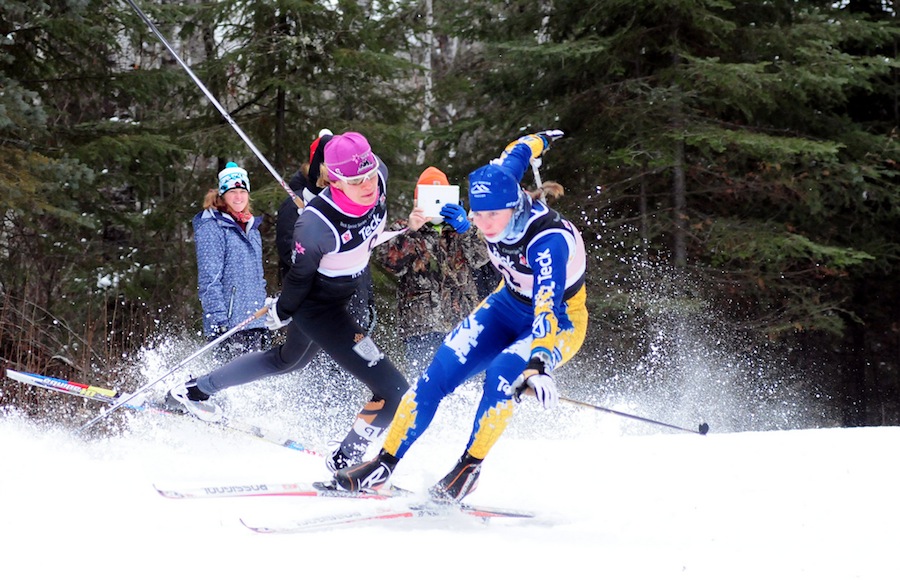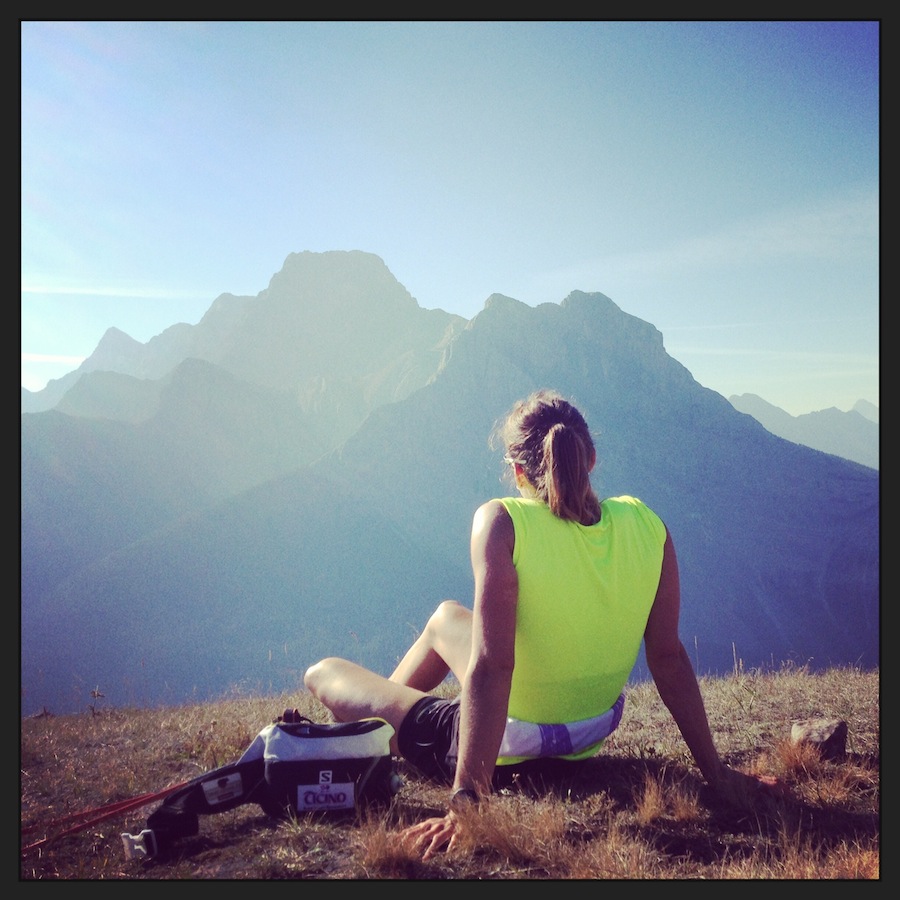
Heidi Widmer is no stranger to head injuries. One of the newest members of Canada’s Senior Development Team, the 22 year old suffered her first as a teenager in the fall of 2009. The culprit? Rollerskiing – downhill, to be specific.
Part of the Alberta World Cup Academy in Canmore, Widmer crashed during a classic rollerski, and the next thing she remembers is the hospital. Four years later, the cause of the accident is still a mystery to her, as she has amnesia surrounding the event, but the effect was a head injury serious enough to send her to the Calgary hospital as a precautionary measure.
“That crash took me by surprise,” Widmer said on the phone last week. “I didn’t really plan on that happening. So that was my one really bad concussion and since then I’ve had to be more cautious with my head. I haven’t had any problems recovering from that. I made a full recovery. I didn’t have any spinal or internal bleeding; I was super lucky with that.”

Fast-forward to Sept. 7, 2013, Widmer found herself in an eerily similar situation.
“This past fall I was classic rollerskiing again and fell on a downhill pitch,” she said. “I slipped on some mud at the bottom; I was going down with a teammate. [There was] a nasty little grime layer at the bottom of the hill that neither of us saw. And that took us both out … I superman-ed into a ditch.”
Fortunately, she didn’t hit her head and there were no major acute injuries. However, Widmer noticed a pressure in her head that didn’t feel right, so she cut her workout short to get some rest. After taking another day off, she started back into training and felt great, winning a skate sprint time trial with the women’s national team that week.
Shortly after, her symptoms returned along with a bad headache. After consulting with doctors, Widmer agreed to take several weeks off, then gradually return to full-intensity training.
“[The pressure] is not extreme and it’s not like I’m in blinding pain, but it’s enough for [the doctors] to want to take the right precautions,” Widmer explained.
Despite these mild symptoms, she resumed full-time training and is more excited than ever to be back.
“I’m super lucky in so many ways that it’s not a serious head injury,” she said. “There’s no internal bleeding, I’m functioning, I’m fine, but I just have to be able to take care of this and come out of it with some lessons learned for sure.”
Widmer had another concussion last winter, when she crashed in a skate sprint during the selection races for U23 World Championships. She had to take five days off to recover, and as a result, missed one of the qualifying races. She still made the team as a discretionary selection and said she recovered completely after five days.
“I haven’t reached the point of the doctors being like ‘one more and you may never be able to ski again’ type extreme,” she explained. “I know that every time it does happen, it adds up in my brain, but I don’t have a specific medical answer for that.
“Being afraid to fall is probably more dangerous than accepting the risk,” she added. “Falling happens to be part of skiing and after all we’re talking about cross country skiing. I’m not an alpine skier pushing 130 km/hour and crashing with my face on ice!”
In addition to maintaining a healthy perspective on her concussions, Widmer has also started doing a fair amount of physio work to maintain and improve her balance — something that took a hit from her first concussion. The trauma caused her damage in her inner ear, which governs balance. She’s working on restoring that balance via physio exercises, while also getting back into shape for race season.
“I think that the rest of this fall is something that will play to my advantage,” Widmer said. “It’s something that I’ve come to view as an advantage for me, because the fall that I had [my previous head injury], [taking time off] paid off in my season. I ended up having one of my best seasons. I think it says a lot to be able to absorb the summer of training and come into the fall with a new perspective and motivation to train. It’s really reignited in me my motivation. Sometimes in the fall it’s super common for people to get super run down with the changing seasons and the ski racing season approaching. So I’m looking at it in as positive a light as possible.”
As for whether she’s feeling the positive effects of her time off yet, Widmer said she’s a little behind with her fitness, but is confident she’ll get back up to speed soon.
“I’ve already seen huge gains in the last week of returning back to intensity,” she said. “The summer [training] is absorbed, and more than anything, I’ve learned to be more patient over the past month.”
Widmer’s first races for the season are the Alberta Cup races the first weekend of December. “I’m ready to get after the winter,” she said.
***
About the Author:
Katie Bono is a Canadian contributor at FasterSkier. Hailing from Minnesota, she raced for Dartmouth College and Sun Valley before turning her energies to climbing (and becoming the fastest known woman to ascend Mt. Rainier in Washington). Now based in Canmore, Alberta, she is an athlete ambassador for Millet and works as a mountain guide in Alaska, Washington and South America.
Katie Bono
Katie is a Canadian contributor at FasterSkier. Hailing from Minnesota, she raced for Dartmouth College and Sun Valley before turning her energies to climbing (and becoming the fastest known woman to ascend Mt. Rainier in Washington). Now based in Canmore, Alberta, she is an athlete ambassador for Millet and works as a mountain guide in Alaska, Washington and South America.



